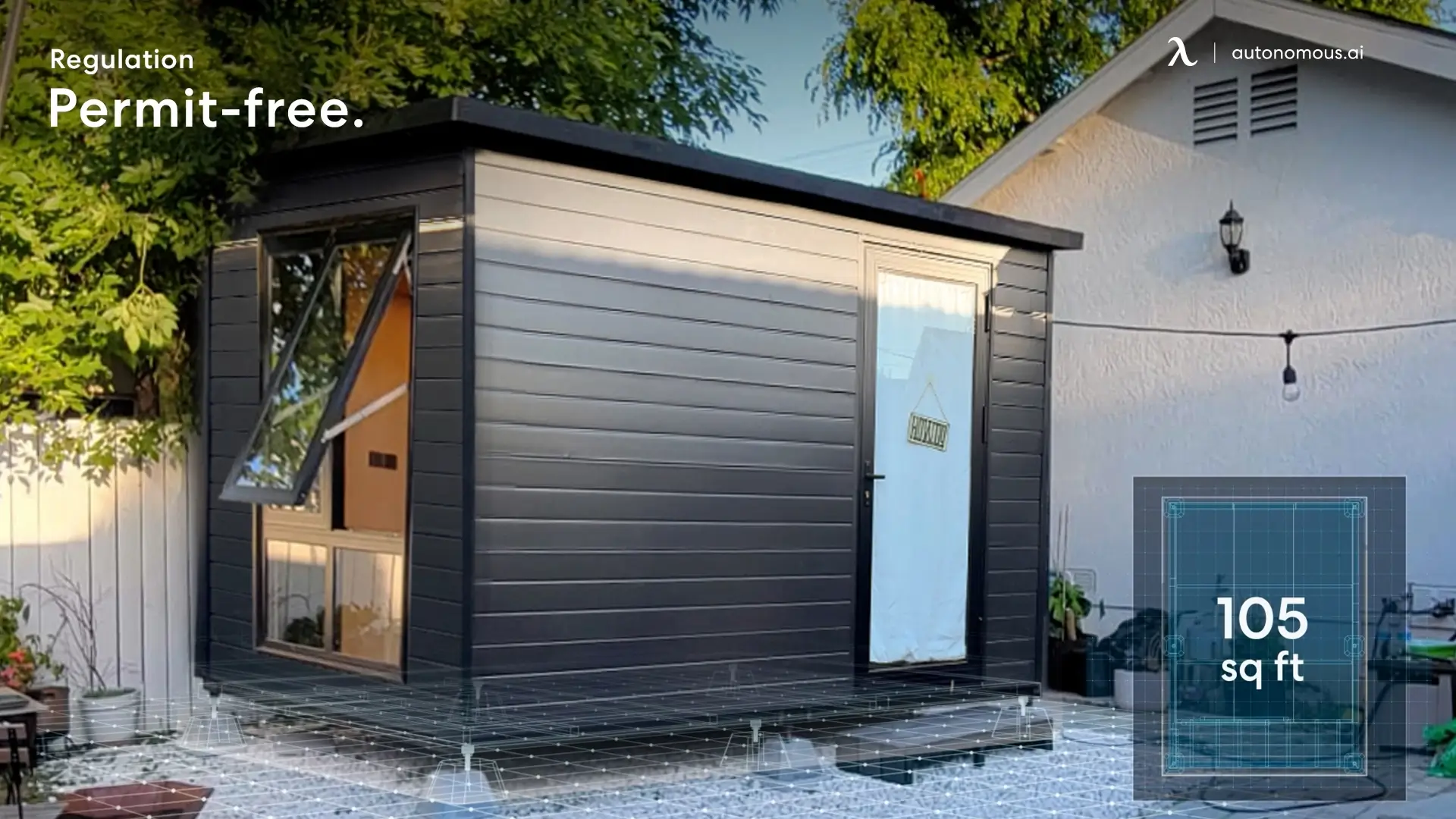
Los Angeles ADU Rules, Ordinance & Permits: What to Know
Table of Contents
- 1. Why Build an ADU in Los Angeles?
- 2. City of Los Angeles ADU Ordinance & Zoning Rules
- 3. Los Angeles ADU Requirements
- 4. ADU Permit Process in Los Angeles
- 5. Parking, Rent Control & Short-Term Rental Rules for ADUs in LA
- 6. Costs & Financing Options for ADUs in Los Angeles
- 7. Permit-Free Alternative: Autonomous WorkPods
- 8. Conclusion
Accessory Dwelling Units (ADUs) are an excellent way to create affordable housing, generate rental income, or add living space in Los Angeles. With California’s relaxed ADU laws, homeowners in Los Angeles have more opportunities to build ADUs. However, understanding the City of Los Angeles ADU ordinance, permit process, and zoning regulations is crucial to avoid delays, fines, or compliance issues.
This guide covers everything you need to know about Los Angeles ADU rules, permitting, and construction requirements so you can successfully build an ADU on your property.
1. Why Build an ADU in Los Angeles?
Los Angeles is experiencing a housing shortage, and ADUs offer a cost-effective solution to provide additional housing. Benefits of building an ADU in Los Angeles include:
- Additional rental income – ADUs can be rented out to long-term tenants, providing a steady income stream.
- Increased property value – Homes with permitted ADUs are more valuable in the real estate market.
- Multigenerational living – ADUs provide private living spaces for aging parents, family members, or guests.
- Housing affordability – ADUs contribute to increasing affordable housing options in Los Angeles.
Before starting construction, it's essential to understand the Los Angeles ADU requirements, permit process, and zoning laws.
2. City of Los Angeles ADU Ordinance & Zoning Rules
The City of Los Angeles ADU ordinance follows California state laws while including local zoning regulations that homeowners must follow. Staying informed about new ADU laws in California 2025 is crucial, as upcoming changes may impact zoning, permitting, and construction requirements for ADUs in Los Angeles.
Where Can You Build an ADU in Los Angeles?
ADUs are allowed on most residential lots in Los Angeles, including those zoned:
- R1, R2, R3, R4, and R5 (Single-family and multi-family residential zones)
- Agricultural zones (A1 & A2)
Los Angeles ADU Rules for Single-Family & Multi-Family Properties
- Single-Family Lots: Homeowners can build one detached ADU and one Junior ADU (JADU) per property.
- Multi-Family Properties: Multi-unit buildings can have multiple ADUs, including converted storage rooms, garages, or basements into ADUs.
Historic & HOA Restrictions
- If your home is in a Historic Preservation Overlay Zone (HPOZ), additional reviews are required.
- Homeowner Associations (HOAs) cannot prohibit ADUs, but they may have design restrictions.
3. Los Angeles ADU Requirements
ADUs in Los Angeles must meet specific size, height, and setback requirements to comply with local zoning laws.
Size Limits
- Detached ADUs: Up to 1,200 sq. ft. regardless of lot size.
- Attached ADUs: Cannot exceed 50% of the primary residence’s square footage, with a maximum of 1,200 sq. ft.
- Junior ADUs (JADUs): Limited to 500 sq. ft. and must be within the existing residence.
Height Restrictions
- ADUs can be up to 16 feet tall.
- In transit-oriented areas, ADUs can reach 18 feet, allowing for two-story units.
Los Angeles ADU Setback Requirements
- Side and rear setbacks: 4 feet minimum required for new construction.
- Front setbacks: Must follow Los Angeles zoning code for front-yard placement.
- Garage conversions: No additional setbacks required if using the existing footprint.
Utility & Solar Panel Requirements
- Separate utility connections may be required for water, sewer, and electricity, depending on the ADU type and location. For detailed information on sewer line hookups, check out ADU sewer connection in Los Angeles.
- Solar panels are mandatory for newly constructed ADUs per California energy laws. Learn more about compliance in ADU solar requirements in California.
- Garage conversions may not require separate utility connections if they use existing infrastructure. Review the necessary electrical and plumbing modifications in garage conversion requirements in Los Angeles.
For homeowners looking to enhance energy efficiency, consider solar-powered solutions to reduce electricity costs:
- Solar shed dehumidifiers help maintain air quality and prevent moisture buildup in ADUs.
- Solar heaters for sheds provide an energy-efficient way to warm up your ADU during colder months.
- Solar fans for sheds improve ventilation, keeping the ADU cool while minimizing energy consumption.
These solar solutions can help reduce long-term operating costs while ensuring compliance with Los Angeles ADU energy requirements.
4. ADU Permit Process in Los Angeles
To legally build an ADU, homeowners must go through the ADU permit process with the Los Angeles Department of Building and Safety (LADBS).
Steps to Get an ADU Permit in Los Angeles:
- Pre-Application Research: Check zoning laws and setbacks.
- Design & Planning: Choose a custom design or use pre-approved ADU plans to speed up the process.
- Submit Permit Application: Provide site plans, ADU designs, and structural details to LADBS.
- Plan Review & Approval: LADBS reviews your plans within 60 days unless revisions are needed.
- Pay Permit Fees: Homeowners must pay permit fees covering plan checks and inspections.
- Start Construction: Once permits are approved, construction can begin.
- Inspections & Final Approval: The city conducts on-site inspections before issuing the Certificate of Occupancy.
ADU Permit Cost in Los Angeles
The ADU permit cost in Los Angeles varies based on size, location, and design complexity. On average, permit fees range from $3,000 to $10,000, including:
- Plan check fees
- Building permit fees
- Impact fees (if applicable)
Using pre-approved ADU plans can help reduce permit costs and approval time.
Additionally, SB 9 in Los Angeles has introduced new opportunities for homeowners, allowing for lot splits and additional housing units, which may impact ADU development in certain residential zones. Understanding how SB 9 interacts with Los Angeles ADU regulations can help homeowners maximize their property’s potential while staying compliant with local laws.
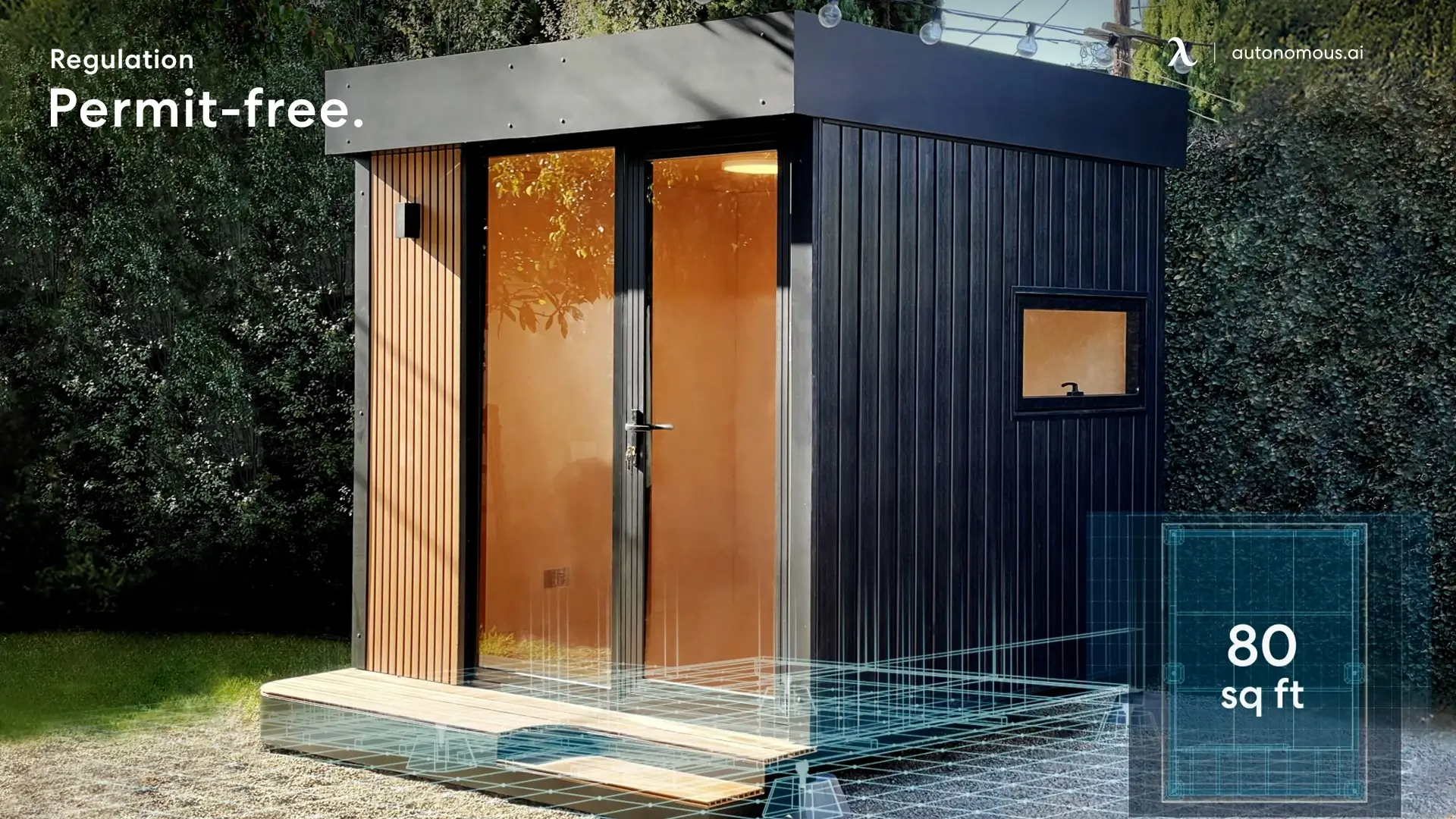
5. Parking, Rent Control & Short-Term Rental Rules for ADUs in LA
Parking Requirements
- No additional parking required if your ADU is within half a mile of public transit.
- Garage conversions do not require replacement parking.
Rent Control & Tenant Rules
- ADUs built before 1978 may fall under Los Angeles Rent Stabilization Ordinance (RSO).
- Newly built ADUs are not subject to rent control laws but must follow tenant rights laws.
Short-Term Rental Restrictions
- ADUs cannot be used as short-term rentals (Airbnb, VRBO) unless they are the primary residence of the owner.
6. Costs & Financing Options for ADUs in Los Angeles
The cost of building an ADU in Los Angeles varies depending on the type of ADU, materials, labor, and permitting fees. On average:
Type of ADU | Estimated Cost |
Garage Conversion ADU | $50,000 – $100,000 |
Attached ADU | $100,000 – $250,000 |
Detached ADU | $150,000 – $350,000 |
For a detailed breakdown, check out how much an ADU costs in Los Angeles.
Financing Options for ADUs
Los Angeles offers several financing programs to help homeowners cover the cost of ADU construction, including:
- Home Equity Loans & HELOCs – Borrow against your home’s value.
- Construction Loans – Short-term financing to cover building expenses.
- California ADU Grant Program – Provides funds for low-to-moderate-income homeowners.
- City Incentives – The Los Angeles ADU Program offers financial assistance and pre-approved plans for qualifying homeowners.
Affordable Housing Alternatives
If you’re looking for low-cost housing solutions, consider cheap modular homes in Los Angeles as a cost-effective alternative to traditional ADUs. Prefabricated modular units provide faster construction times and lower upfront costs, making them a great option for homeowners looking to expand their property affordably.
7. Permit-Free Alternative: Autonomous WorkPods
For homeowners who want extra living or working space but wish to avoid the lengthy ADU permit process in Los Angeles, Autonomous WorkPods offer a hassle-free, permit-free alternative. Unlike traditional ADUs, which require zoning approvals, utility connections, and extensive inspections, WorkPods are modular, pre-built units that can be delivered and set up quickly in your backyard.
No Permits Required
Since WorkPods are considered temporary structures, they typically do not require city permits, saving homeowners months of approval time compared to traditional ADUs. This makes them an ideal permit-free alternative for those who need extra living or working space without dealing with zoning restrictions and costly permits. Permit-free ADUs provide flexibility for homeowners who want additional space without navigating complex approval processes.
For those considering a small-scale, permit-friendly ADU option, a Junior ADU in Los Angeles offers another low-cost housing alternative. JADUs are 500 sq. ft. or smaller, often built within an existing home or garage conversion, and may require fewer permits than larger detached ADUs.
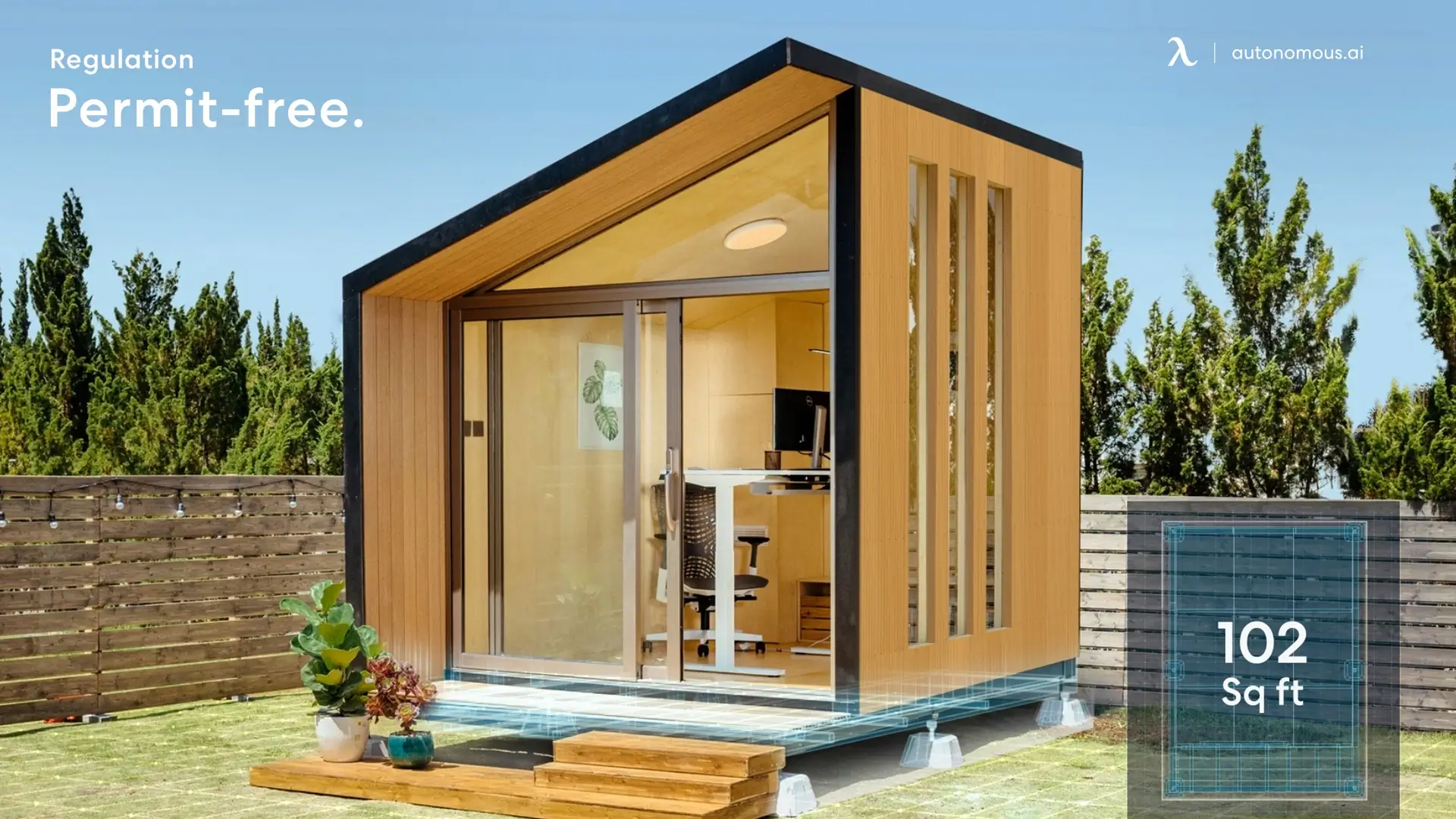
Fast Installation
Traditional ADUs can take 9-14 months to complete, requiring lengthy permitting, site preparation, and construction. WorkPods, on the other hand, are delivered and set up within days, offering a quick and hassle-free alternative for homeowners who need additional space without major disruptions. Compared to the timelines involved with best ADU builders in Los Angeles, which include custom design, permitting, and inspections, WorkPods provide an efficient solution for those looking for immediate use.
Cost-Effective
While a detached ADU in Los Angeles can cost $150K–$350K, WorkPods provide a more affordable option for a private office, studio, or guest space.
Minimal Utility Requirements
WorkPods come pre-wired and can function with solar power or a simple extension connection, eliminating the need for expensive sewer and water hookups.
Versatile Usage
WorkPods provide flexibility for a variety of uses, whether as a home office, creative studio, workout space, or guest retreat. They offer year-round comfort and privacy without the complexity of full ADU construction. A prefab home office provides a dedicated workspace, while a studio office shed adds a professional touch for creative projects.
For those needing compact and efficient backyard setups, a tiny office shed can maximize productivity without taking up too much space. Meanwhile, homeowners exploring modern backyard structures in Los Angeles can find inspiration in ADU designs in Los Angeles or consider a prefab office shed in Los Angeles for a balance of style and functionality.
For those looking for an outdoor workspace that blends modern design with functionality, check ou outdoor office solutions in California. If you need a compact, indoor workspace, explore innovative indoor home office pods as an alternative.
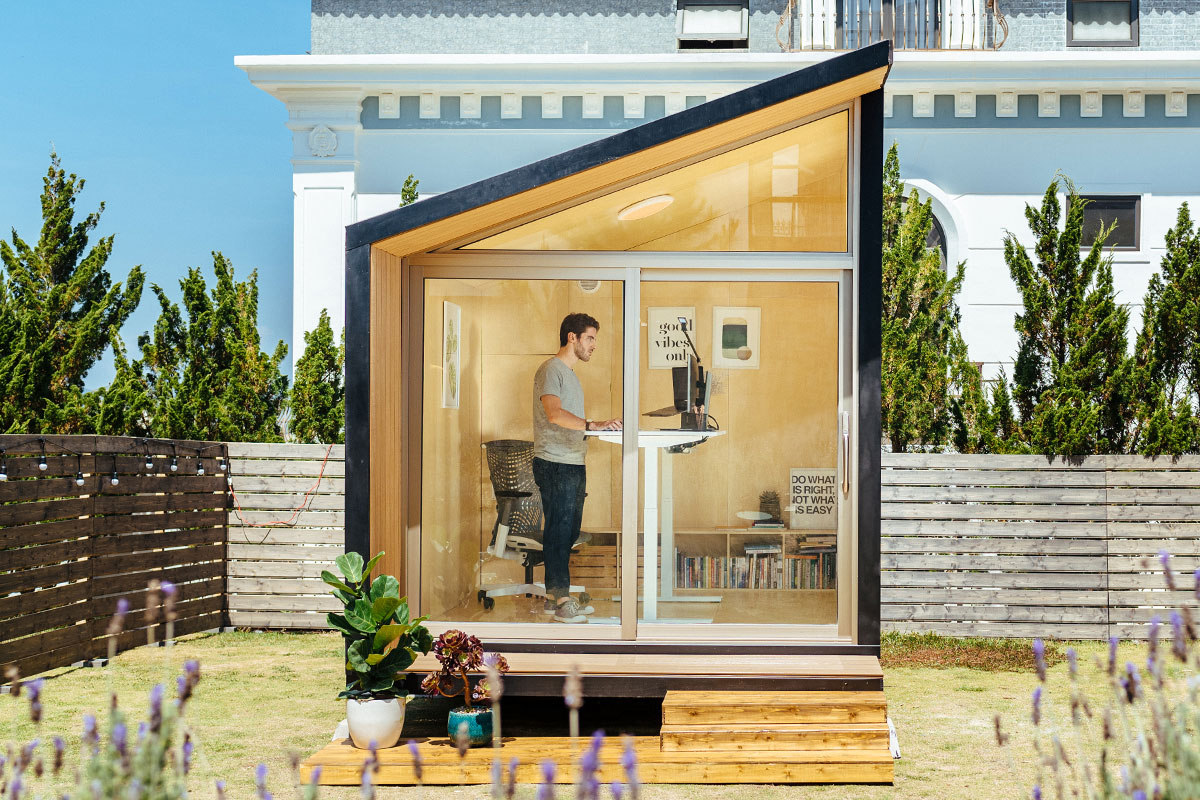
WorkPod
| Overall size | 8.5’W x 12’L x 11’H |
| Floorspace | 102 square feet |
| Ceiling height | 6.8’ to 9.3’ |
| Weight capacity | 2.9 tons |
| Door & Window dimensions, material (include glass) | Main door: 7.5’W x 6.8'H 3 windows: 1.1’W x 7.9’H Window material: Wooden frame, 5/16” tempered glass, composite wood cover Door material: Anodized aluminum frame, 5/16” tempered glass |
| Siding, roof, floor & balcony material | Siding: Plywood 1/2”, wooden frame, honeycomb paper, plywood 3/8”, bitume, housewrap, vinyl siding Roof: Roof shingles Floor: Plywood Balcony: Composite wood |
| Electrical devices | 1 RCB (Residual current breaker) 3 Wall outlet (Universal wall sockets) 1 Ceiling light switch 1 Ceiling light 1 Ventilator switch 1 Ventilator 66ft power cable with 2 connectors |
| Power input | Maximum voltage: 110V AC (US standard) Maximum current: 25A Maximum power dissipation: 2750W |
| Interior furniture | Unfurnished option: 1 Bookshelf, 1 Electrical Cabinet Furnished option: 1 SmartDesk Connect, 1 Autonomous Chair Ultra, 1 Monitor Arm, 1 Cable Tray, 1 Filing Cabinet, 1 Anti-Fatigue Mat, 1 Bookshelf, 1 Electrical Cabinet |
| Compatible with | Portable air conditioner: A/C units with dimensions smaller than 22” L x 20” W x 88” H and a 5.9” vent hole diameter will fit well. Heater: A small personal heater is more than sufficient. |
- Handy homeowners
- Professionals who need a quiet, dedicated space to work from home
- Freelancers who require a focused environment away from household distractions
- Permit-free
- Zero foundation preparation
- Built with weatherproof and soundproof materials
- Pre-wired with ambient lighting and outlets
- Ready in 3 days
8. Conclusion
Building an ADU in Los Angeles is a great investment, but it’s crucial to follow Los Angeles County ADU requirements and the City of Los Angeles ADU ordinance to avoid costly mistakes. Understanding setback rules, zoning laws, permit costs, and design limitations will help homeowners successfully navigate the ADU process while ensuring compliance with local regulations.
For a smooth ADU approval, considering pre-approved plans, hiring an experienced ADU builder, and researching financing options can help streamline the process. By following these steps, homeowners can maximize their property’s potential while staying compliant with Los Angeles ADU laws.
For those looking for alternative backyard structures, a small shed office interior can create a functional and stylish workspace. Homeowners who need a more self-sufficient setup may explore an office shed with a bathroom for added convenience and privacy.
Stay connected with us!
Subscribe to our weekly updates to stay in the loop about our latest innovations and community news!
Interested in a Link Placement?
Spread the word
.svg)
.svg)


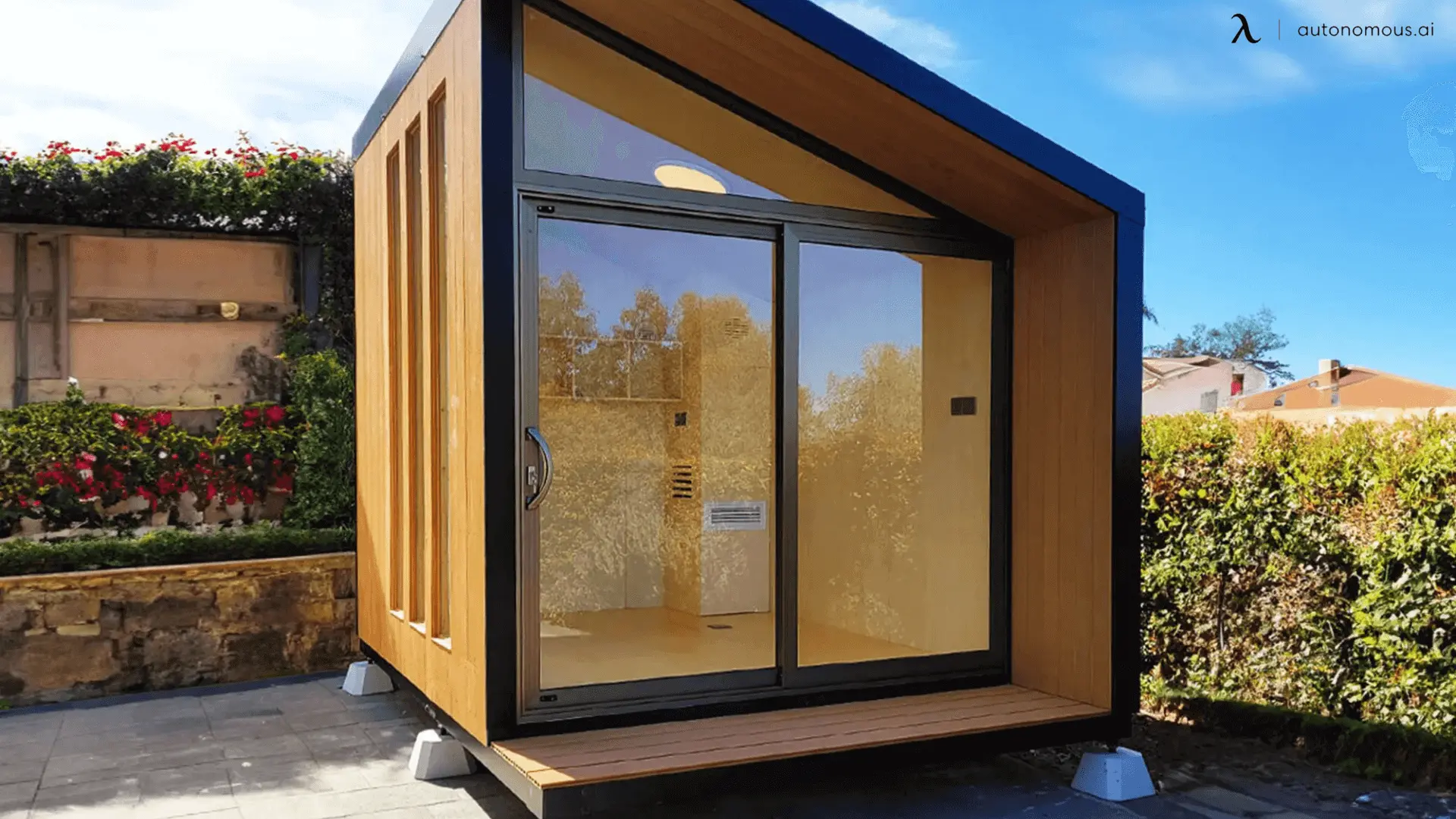
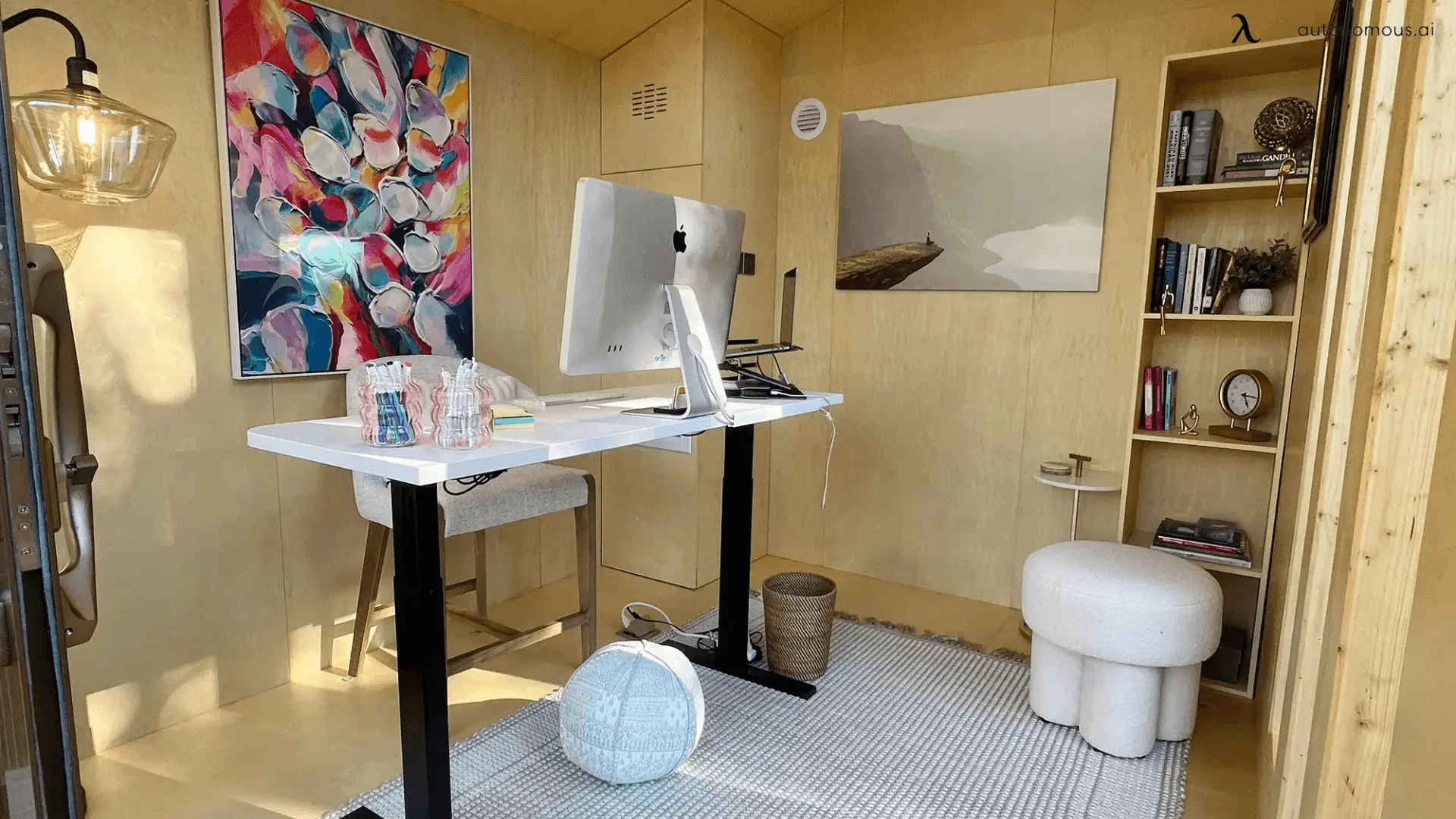
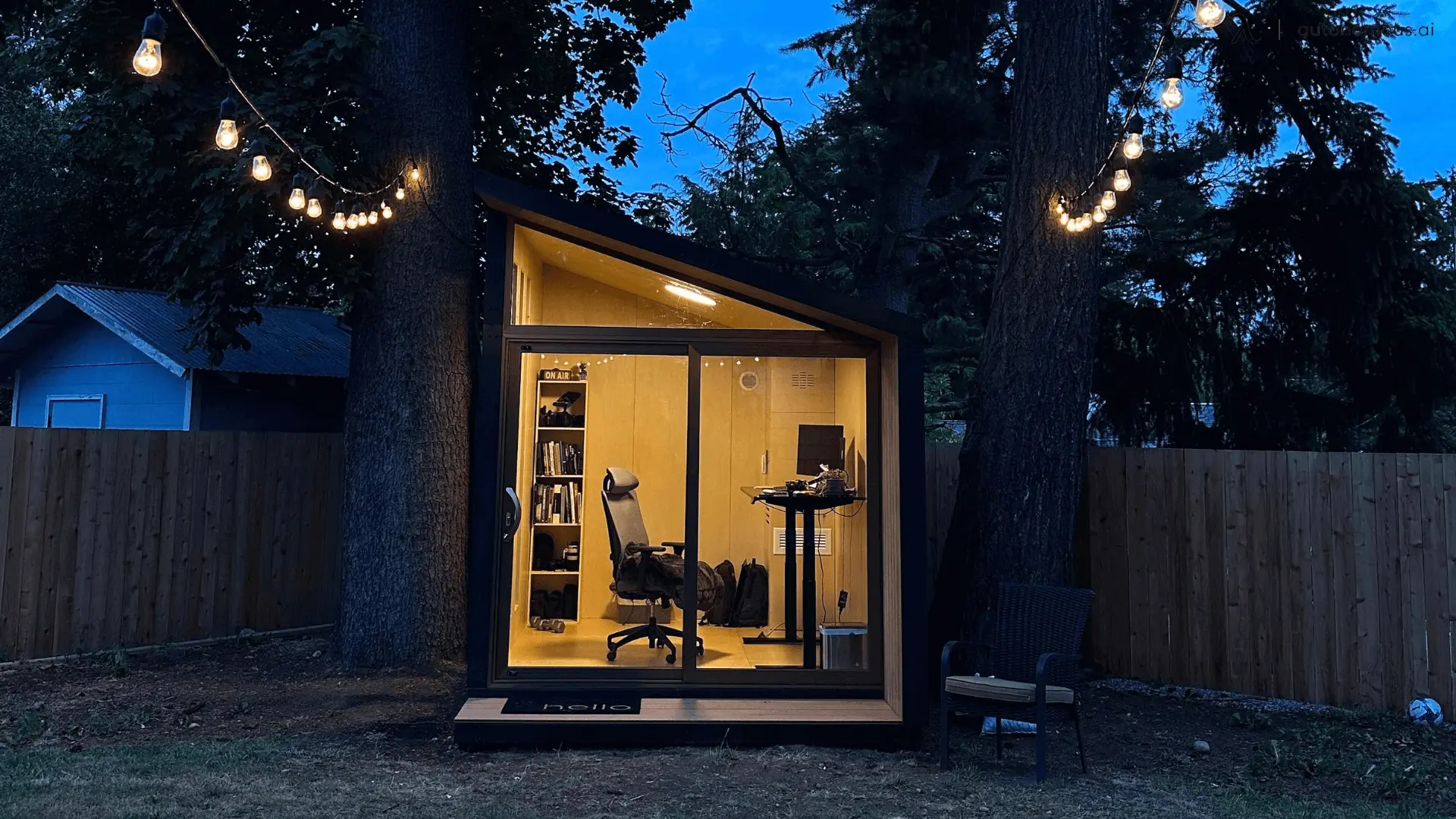


/https://storage.googleapis.com/s3-autonomous-upgrade-3/production/ecm/230914/bulk-order-sep-2023-720x1200-CTA-min.jpg)

/https://storage.googleapis.com/s3-autonomous-upgrade-3/production/ecm/230824/image_78sctd8d_1692158325567_raw-80639991-bedf-4e11-a77c-1c8e0a351b40.jpg)